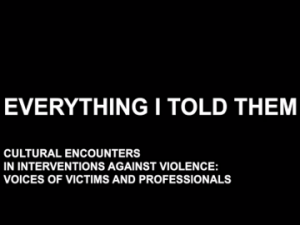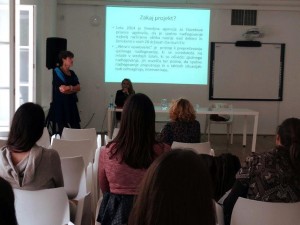Sexual harassment in Slovenian newsrooms is common and increasingly normalised

 According to the initial findings of the research on the position of women journalists and media workers in Slovenia, conducted as part of the international Women in media project, one third of respondents reported experiencing physical sexual harassment. As many as 86 % regularly face sexist comments, most often from colleagues or superiors.
According to the initial findings of the research on the position of women journalists and media workers in Slovenia, conducted as part of the international Women in media project, one third of respondents reported experiencing physical sexual harassment. As many as 86 % regularly face sexist comments, most often from colleagues or superiors.
Only a small number of journalists choose to file a report. The data show that the likelihood of reporting decreases with the increasing intimacy or sexual nature of the attack. The most frequently cited reasons for not reporting include a lack of trust in the effectiveness and impartiality of procedures, the perception that such incidents are “too common” for reporting to make a difference, as well as lengthy and exhausting procedures. Another key factor is the fear that reporting could negatively affect their position in the workplace.

On the International Day for the Elimination of Violence against Women, Tjaša Turnšek, in cooperation with the Slovene Association of Journalists, presented the first results of the Women in Media research.
The research highlights that, although journalists generally know what an appropriate response to harassment or violence should look like, systemic barriers often prevent them from acting. While media organisations do have internal documents and protocols in place, most respondents see them as ineffective, merely formal, and without tangible results. The findings stress that the existence of rules alone is insufficient. Safe, confidential, and genuinely functional reporting mechanisms are needed, along with consistent implementation of adopted measures. Awareness-raising and education within newsrooms are equally important.
A total of 31 % of journalists have experienced at least one form of physical threat or attack. The most common are threats of physical assault and death threats. Perpetrators are most frequently individuals encountered in the field (56 %), followed by those acting online (44 %). Such threats are most often directed at mid-career journalists, whose visibility and exposure tend to be highest. Fewer than 40 % of victims reported the incidents to their superiors or the police.
As many as 55 % of respondents experienced gender-based discrimination or other violations of labour rights, including issues related to contracts, pay, or working hours. In three quarters of these cases, no report was filed.
Sexist comments and acts of discreditation, experienced by 86 % of respondents, are most commonly perpetrated by colleagues (51 %) and individuals online (46 %). Here too, three quarters of victims do not report the violations.
A quarter of journalists faced verbal or non-verbal sexual harassment, with colleagues responsible in more than 40 % of cases. More than 80 % did not report the incidents, primarily due to fear of retaliation. The majority of the 33 % who experienced physical sexual harassment in the form of inappropriate touching likewise did not file a report. In over half of these cases, the perpetrators were colleagues.



